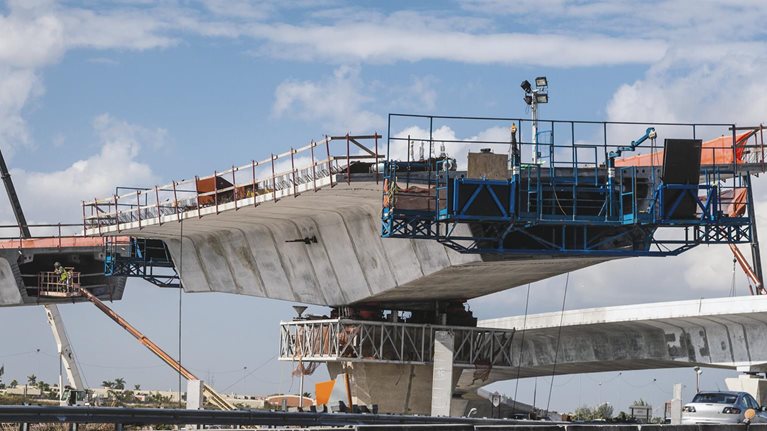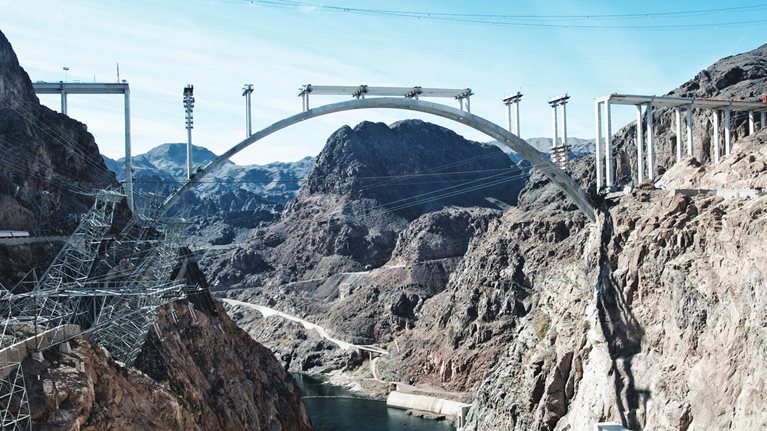The Bipartisan Infrastructure Law (BIL) is set to deliver approximately $550 billion in new spending over the coming decade, making it one of the largest public-works investments in history.
More than 85 percent of the total will go to state and local agencies via project grants (Exhibit 1). Unlike the American Rescue Plan (ARP), which relied mostly on formula-based funding allocations to push aid out quickly, the BIL creates a large and more complex funding environment with multiple potential applicants and detailed eligibility requirements.

Roughly 60 percent of BIL grants are being distributed through formula-based funding, through which a state’s funding amount is automatically defined by set formulas—for example, based on population size or miles of road (Exhibit 2). However, the remaining 40 percent comes through competitive grants, loans, and federal programs—many of which are new and require municipal governments, public and private project sponsors, state agencies, and utilities to be the direct applicants.

For these governments and organizations to secure funding, they will likely need to define infrastructure projects and programs across multiple sectors and agencies in ways that directly address objectives for critical equity, the environment, clean-energy transitions, and economic development. Moreover, officials will likely need to navigate a complex set of approvals and stakeholders to deliver new builds and upgrades, all while integrating innovative technologies and managing cost with strained supply chains and the new Buy America requirements.1
To deliver these outcomes under challenging circumstances, the Biden administration has asked states and even major cities to appoint infrastructure coordinators, and several states have already done so.2 For example, Delaware appointed an executive from its Department of Natural Resources and Environmental Control to lead state efforts under the governor. Other states, such as Arkansas, have opted to set up a board of advisers led by a cabinet secretary to run their infrastructure programs.3
This article, part of our series Reinvesting in America, discusses how a well-defined, sufficiently staffed, and appropriately resourced infrastructure coordinator could deliver results.
Why BIL applications may need a guiding hand
While the BIL presents new funding opportunities, it could also present many challenges for states—all of which may build a case for installing a steady infrastructure coordinator at the helm:
- Unprecedented levels of funding. Some programs, such as the Drinking Water State Revolving Fund (DWSRF), will receive more funding in the next five years ($30 billion) than in the previous 25 years combined ($25 billion).4
- Many stakeholders to coordinate. For example, clean-water investment is typically led jointly by state health agencies, state water entities, and local municipal utilities with unique and sometimes overlapping responsibilities.
- Wide variability in stakeholder priorities. States will need to balance urban, rural, and regional priorities and develop a deep understanding of the current condition of capital assets and capital plans to identify areas of need and investment.
- New energy technology requirements. For example, in addition to determining the locations for electric-vehicle (EV) charging infrastructure, the law requires states to establish interconnected networks—an undertaking that requires building architecture, a technology stack, an operations plan, and a clear set of goals.
- Decentralized project planning. Modular, replicable, and scalable projects—for example, repairing one bridge instead of identifying 75 to be upgraded at once, at much cost and effort—could propel cost savings and application churn.
- A need for matching funds. For many programs, states are required to match up to 10 to 40 percent of the total award to receive funds.
- Complex and overlapping eligibility requirements. Because of the BIL, there are now more than 110 competitive funding programs—as well as more than 700 new or revised statutory deadlines. These are in addition to the funding and requirements created under the CARES Act, the Consolidated Appropriations Act of 2021, and the American Rescue Plan (ARP), and reaffirmed by the BIL.5
- High labor and supply chain costs. The increase in funding from the BIL has the potential to further improve a market that has already seen 15 percent growth in prices in one year.6
- Compliance with domestic production requirements. The BIL expands Buy America requirements for federally funded infrastructure projects to cover most construction materials.
Chief outcomes officer: The role of an infrastructure coordinator
Without additional support, state and local agencies will still receive funding and projects will continue to move ahead—but in that scenario, the potential to transform the state’s economy may have already slipped away. This is where the state infrastructure coordinator could come in.
By focusing on five key goals, an infrastructure coordinator could help a state maximize ROI from infrastructure investments and potentially deliver outcomes across growth, equity, and sustainability goals.
Get competitive
While formula-based grants remain a key tool for delivering funding to states, the BIL marks a shift in how the federal government distributes funding. About 40 percent of the funding within the BIL is in the form of competitive grants—for which states must submit applications for consideration and are scored based on application strength—with 60 percent (more than $50 billion) taking the form of formula grants that require a robust plan to access funds. To secure funding, therefore, the infrastructure coordinator may want to consider leading a robust application process.
This process could involve scanning for program deadlines and requirements (even as programs are still being designed), providing “surge capacity” to agencies to ensure they have the resources to write compelling proposals (including conducting additional analysis and creating compelling visuals and media), conducting feasibility assessments, and looking for opportunities to leverage modular and replicable applications (for example, program solutions for modular bridge replacement or lead pipe replacement). Other areas of application support could include comparing proposed projects against BIL federal-agency requirements to check application strength, identifying and convening stakeholders critical to delivery early in the process, and resolving bottlenecks in day-to-day grant application activities. Finally, providing expertise in some of the new technologies (for example, EV charging systems and grid resilience) could have an impact on application success for programs where technical input matters.
Some state agencies likely already have these capabilities in-house. Others, including agencies hit by underfunding in the past decade, may struggle without this centralized support. The infrastructure coordinator could play a critical role in ensuring that state resources support the departments and agencies most in need, reflecting realities on the ground rather than taking a cookie-cutter approach.
Focus on the constituent
Large construction projects create benefits in the long run but are often associated with daily disruption in the immediate term. Road projects can mean detours, longer commute times, and increased traffic jams, which in turn lead to lost productivity and greater carbon emissions.7 Lack of coordination between state and local agencies could result in situations such as a street being dug up one year for lead pipe replacement, only to be torn up again the following year to lay new fiber-optic cable. Infrastructure may be built at a project level, but the sum of all this construction can be disruptive to communities.8
In this environment, infrastructure coordinators could think about representing commonsense policies, both as advocates for their constituents and as managers of the public dollars at play. Some of these efficiency measures could be considered low-hanging fruit; for example, during the implementation of the Recovery Act, state governors would notify the federal government when projects seem incorrectly sequenced (for example, when heavy equipment tears up a newly built road while working on a construction site). Other such measures that could be pursued are more innovative, long sought-after, and often harder to achieve—such as “dig once” policies—in which construction and deployment of multiple asset classes, such as water, fiber, and power, are tightly coordinated and delivered together to maximize impact while minimizing disruption and cost.9
Infrastructure coordinators may also be positioned to focus not only on individual projects but also on bigger questions, such as how to connect rural communities with economic opportunities. This involvement expands the focus from dollars and deadlines to metrics that include equity, sustainability, and overall citizen ROI. Because they are empowered to speak about all of a state’s infrastructure needs, infrastructure coordinators could be the key individuals to deliver on those targets.
Streamline performance management
An early area of potential impact for the infrastructure coordinator to consider addressing is establishing transparency into the state’s performance. Given the volume of BIL projects, having an unbiased, data-backed view into which projects are ahead of or behind schedule and budgeting in a centralized manner may play a critical role in helping the state to identify where support is needed most, spot risks of overlapping work early, and identify opportunities to streamline execution. This transparency could be externally facing, with dashboards for broader stakeholders to access, in addition to regular communications. This may include core aspirations for BIL funds, major outcomes the state will track (number of lead pipes removed, broadband locations served, roads and bridges repaired, and so on), and, eventually, funds awarded.
However, gold-standard performance management is more than metrics on a dashboard. It is also about knowing where and how to collaborate to drive improved outcomes.
Debottleneck the supply chain and workforce
All the infrastructure asset classes covered in the BIL require vast amounts of raw materials—concrete, rock, sand, water, soil, steel, copper, glass, and more—all of which must comply with Buy America requirements. To avoid delays, the coordinator role may benefit from having a real-time view on the current supply of raw and processed materials, a forecast of demand, and contingency plans to alleviate bottlenecks in the distribution networks.
The supply of talent to deliver a state’s projects is also a potential factor. The US construction sector relies on a value chain of 11 million workers.10 Infrastructure coordinators may want to take a proactive approach in partnering with local construction companies, engineering firms, material suppliers, trade schools, and other stakeholder organizations in an effort to expand their capacity before shovels break ground. Coordinators may also have to contend with the requirement to implement a local hiring preference, including through prehire agreements, for transportation-funded projects. With an estimated economic multiplier of more than two,11 a healthy construction sector could help fuel a state’s growth, in addition to keeping its projects running smoothly.
The final set of constraints likely to affect project delivery is the regulatory environment surrounding construction. Infrastructure coordinators may consider a variety of initiatives that could shorten project timelines, from the relatively simple (such as allowing construction on Sundays) to the more comprehensive (such as creating permitting fast lanes for priority projects) to the overdue (such as digitalizing permitting, reporting, and other processes).
Consider bolstering supporting capabilities
The future of infrastructure may become increasingly dependent on several crosscutting areas that require additional expertise: equity, sustainability, mobility, and resilience. Anecdotally, these are typically areas where many people have responsibility—because the areas serve as key outcomes for their portfolios—but lack ownership on a wider scale. Moreover, equity, sustainability, mobility, and resilience also encompass different priorities across asset classes and contexts. For example, equity could be viewed through the lens of race or geography (rural versus urban), while resilience may mean integrating heat-resistant materials in roads or maintaining broadband connection during disruptive events.
Likewise, while many organizations within a state have deep expertise in drafting and implementing projects, BIL funding emphasizes directing funding to communities that have historically had more limited access to federal support. All states may want to consider ramping up their technical assistance and devoting resources to help communities successfully define projects, receive funding, and deliver construction projects more effectively to enable equitable impact.
State infrastructure coordinators could also benefit from a cross-agency working group and cross-functional team representing key sectors (such as roads and water), functions (such as legal and regulatory, grant application, feasibility, regulatory approvals, procurement, and construction delivery), and expertise (such as technology and engineering).
Finally, infrastructure is set to enter the digital age, with potential for investment not just in pipes and pavement but also in sensors and statistics. Applying a technology-focused lens to infrastructure (for example, monitoring systems to track water pressure and leakage or creating software that can drive energy efficiencies) could help reduce the total cost of maintaining and operating core infrastructure. The infrastructure coordinator could use this as a way to drive value across the various state and local agencies involved in the process by improving awareness and adoption of digital tools.
It’s an exciting time to be in US infrastructure. The funding earned and decisions made today will have a lasting impact on communities to come. Approaching the competitive grant and funding process with a strong, trusted leader at the helm could help governments and organizations navigate complex, fast-moving application processes.


